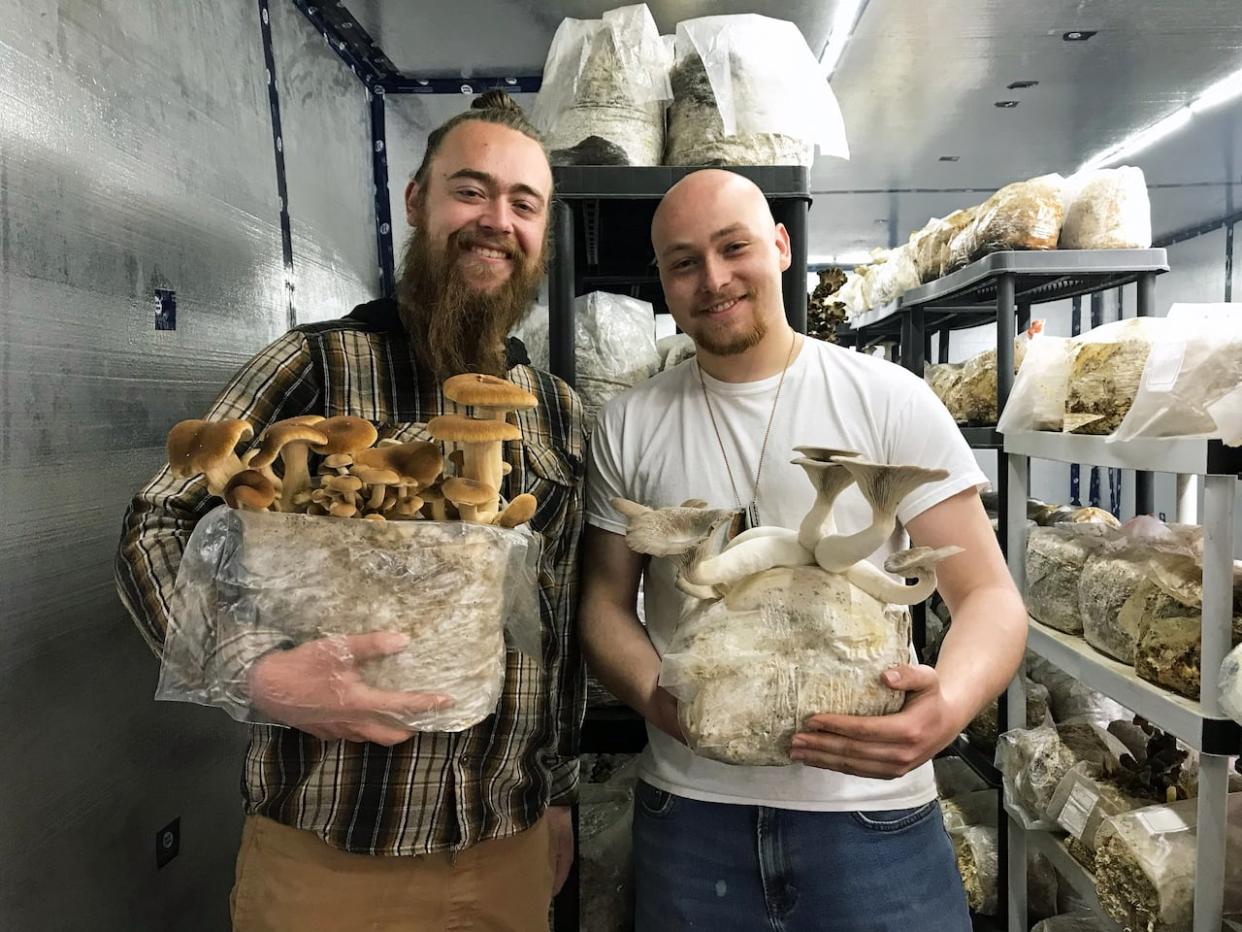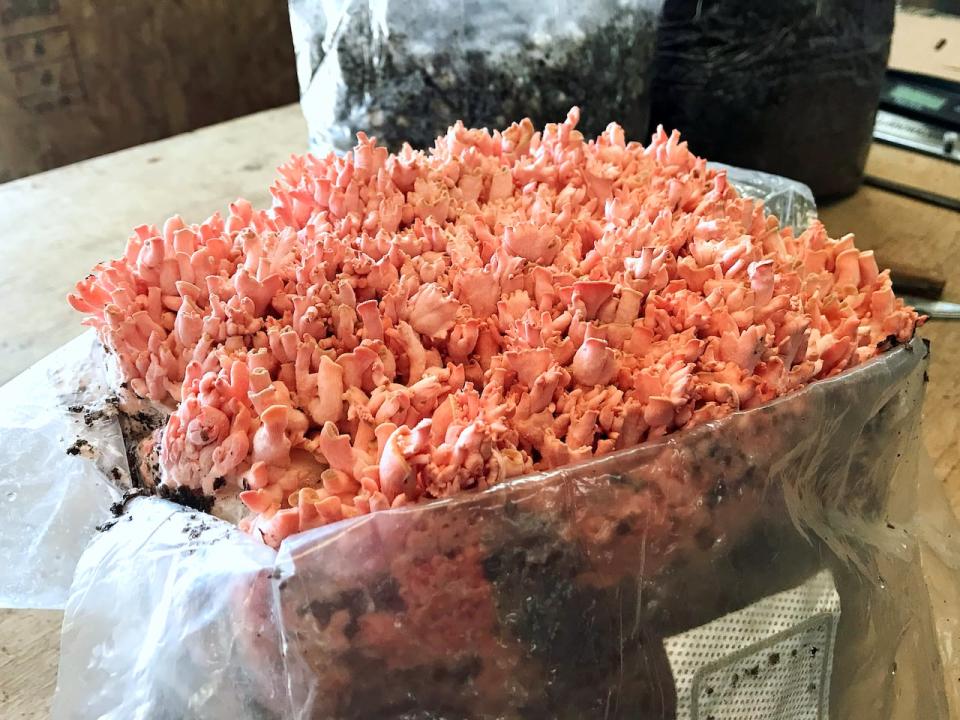Something extra-'spore'-dinary is popping up in Elmira at The Mushroom Tree: Jasmine Mangalaseril

When Nicholas Kempel was a boy, his father offered him some advice: If you do something you love, you never work a day in your life.
"And I was like, 'yeah that makes sense,'" Kempel recalled. "I don't want to feel like I'm working. I want to feel like I'm just having fun."
At 17 years old Kempel, found something he loved and started building his business: growing gourmet and medicinal mushrooms at The Mushroom Tree.
Now, four years later, he owns an indoor mushroom farm in Elmira and sells his harvests at the St. Jacobs and Stratford Farmers' Markets.
Kempel is a self-taught mushroom farmer. While many used growing kits during the pandemic, his farm began in a 14-square-metre space in his grandfather's auto garage – many commercial farms are indoors because it's much easier to control light, temperature, humidity, and airflow.

Chestnut mushrooms have an earthy aroma and mildly sweet flavor with distinct hints of nuttiness. Many people compare their flavour to shiitake mushrooms. (Jasmine Mangalaseril/CBC)
"For a couple of years, I would work for my grandpa at his shop all day, and then I'd finish and do another full shift of working on the mushroom farm," said Kempel.
"I worked over 12 hours a day, seven days a week, for multiple years. For the first summer that we were at market, I only slept five nights a week. It was ridiculous."
Apart from working around the clock, having a mushroom farm in an auto garage didn't mix. Mushrooms need a very humid environment — 85 to 95 per cent — and the spores got everywhere. He moved the farm to Elmira less than two years ago.
His friend Ansel Zmuda-Soltis started helping while in school. After graduating as a robotics welding engineering technician, instead of working auto assembly lines, he became a mushroom farmer.
"It's a little bit of a career change," said Zmuda-Soltis. "To be honest, I'm not quite sure how it happened. Nick just said, 'Hey, do you want to help me?' Sure, we were doing work, but we were just two kids having fun."
Together, they work on every aspect of the farm from varietal selection, to growing, to building climate-controlled rooms so they can grow more mushroom types.

Kempel grows his mushrooms in bags filled with sterilized substrate made of soy hulls and oak. On the top rack there are bags of Lion's Mane mushrooms and underneath are Pink Oyster mushrooms, you can see one popping through on the bottom left. (Jasmine Mangalaseril/CBC)
Growing mushrooms is a multi-step process involving science, sterilisation, a controlled environment and time.
Kempel and Zmuda-Soltis inoculate sterilized grain with liquid culture — mycelium flakes in a growth solution — to develop masses of long, thread-like strands.
The developed mycelium is inoculated into grow bags filled with sterilised substrate. Substrate can be made from many things, including sawdust, coffee grounds, or cardboard. The Mushroom Tree uses a mix of soy hulls and oak.
"Mushrooms like to metabolize like animals or humans do. So, they need fats and carbohydrates and fibre from the wood," said Kempel. "They're nothing like plants. They don't operate on photosynthesis. They're literally eating their substrate."
Sudden environmental changes, like a temperature drop, increased humidity, cause the mycelium to "get angry." Little nubs (pins) form, which then become mushrooms. Depending on the species, the entire process can take a few weeks, but some can take months.
Lion's Mane, and Pink Oysters, and Reishi. Oh my!
They currently grow about a dozen varieties. Several types of oyster mushrooms, and others such as lion's mane, chestnut, pioppino, beech, and reishi.
Each week they harvest about 100 kilos. While some can stay good for ten days, others only have a shelf life of a few days.

These little nubs, called pins, will grow into pink oyster mushrooms. The taste of pink oysters has been described as meaty and “seafoody”. (Jasmine Mangalaseril/CBC)
"Pink oysters can only last around three days. They will go bad extremely fast, and they will have a very potent ammonia smell and taste," said Zmuda-Soltis. "But if you take black pearl kings, [they] can last up to a week and a half."
They're always on the lookout for different varieties, but customers always ask about truffles. Truffles need a complex ecosystem. It's possible to recreate but can take the better part of a decade to become productive, as a B.C. truffle farmer learned.
Kempel notes, "It's ridiculous. You just cannot replicate the thing that exists in nature. It's just completely unique and you can't replicate it, but it's something you can find all over the world."


